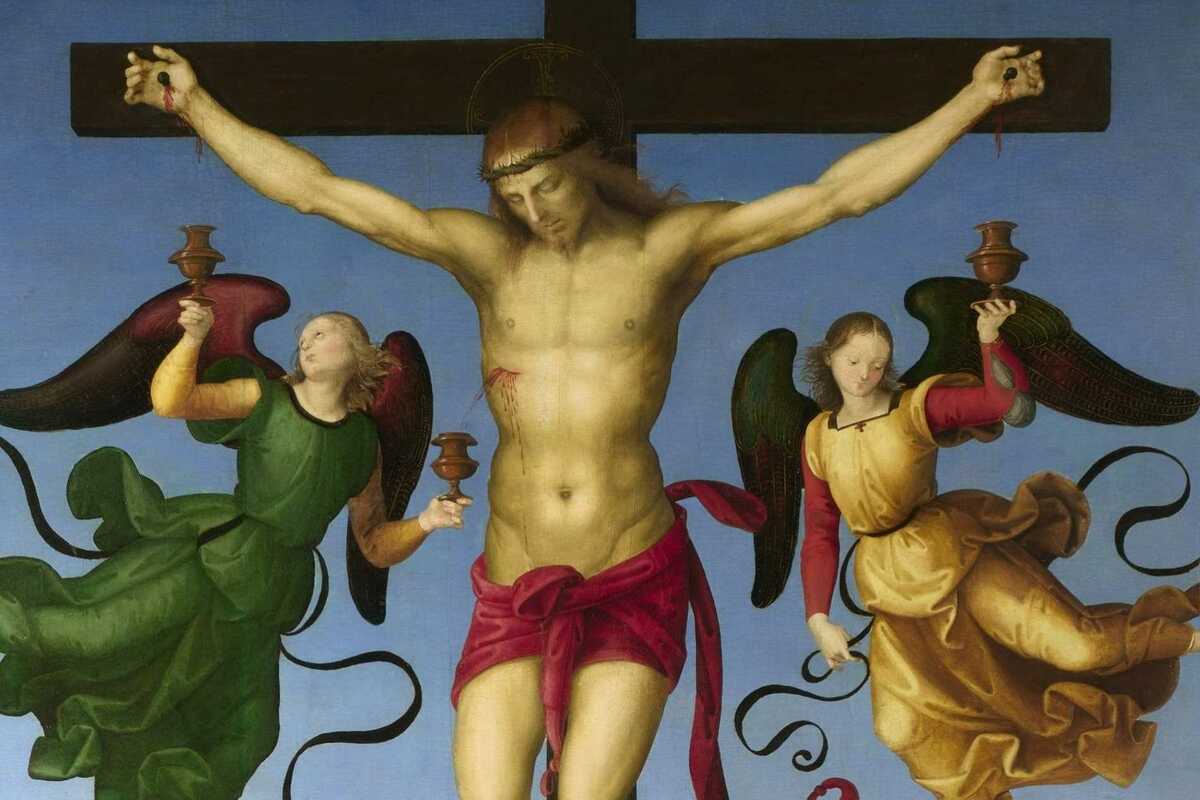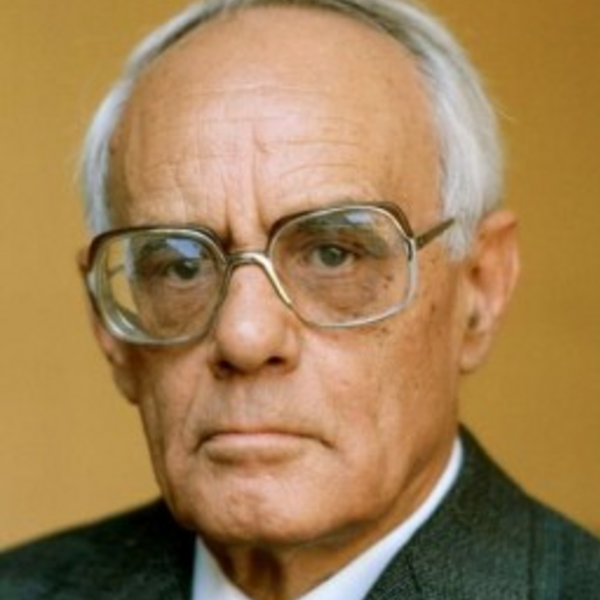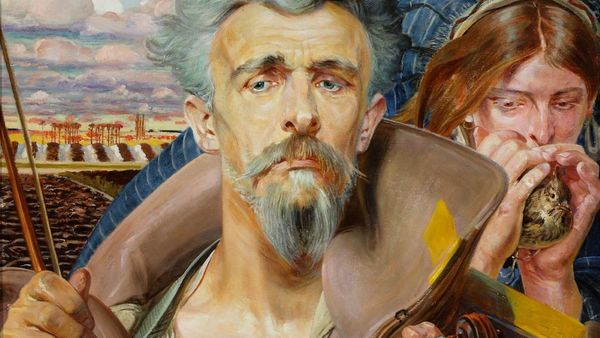We have reached the end of the summary overview of the survival of the idea whose biblical justification was the subject of this work [Rahner's dissertation, E Latere Christi —ed.]. The fact that it did not perish, and even became part of a solemn doctrinal decision of the Church, is probably one more reason not to consider the attempt to show its biblical justification as too daring from the outset.
It is probably not necessary or appropriate to circumstantially assess the degree of certainty with which the notion under discussion can be addressed as biblical. The pre-dogmatic exegesis as such probably yielded a good probability, the Patristic consensus gives a theological certainty to the result of this exegesis (of course not to the process of proof as such).
If the idea of the origin of the Church as a second Eve from Christ’s side wound is a general doctrine of the Fathers, of the theologians, and thus approximately also of the Church itself, then we have thus proved a real type, which is not expressly expressed in Scripture and yet is a type in a theological sense, so that according to God’s intention the formation of Eve actually prefigured the formation of the Church from Christ. The history of this conception is thus a contribution to the doctrine of types. It shows by a single example that the types given in Scripture are not the only ones. This work has also shown that the doctrine of types is not as irrelevant for the ascertainment of revealed truths as it is often made out to be, for much and precious patristic thought was often passed on in this symbolic formulation.
If it is true that we are dealing with a real type in our conception, then it is also said that the flowing forth of blood and water from the side wound of Jesus itself has a symbolic meaning. For only then can it be parallel to the formation of Eve from Adam’s side. But with this we have proved in a particular case that events of Jesus’s life itself can have a typical meaning. Although theologians generally admit this, “plerique recte tenent,” says Merk, few examples are given in detail (e.g., Heb 13:11, Jesus’s death outside the city; according to the Fathers, Peter’s little ship).
A systematic treatment of the whole question of these types in the life of Jesus himself would not be such an out-of-the-way enterprise as it might seem at first glance. And there are several reasons for this. Firstly, as has already been indicated, the meaning of John’s Gospel cannot be grasped at all without this point of view of the soteriological-symbolic significance of the individual events of Jesus’s life. This question is simply given to the exegete by the object of his work. This question would then continue to be appropriate, because it is in itself a secure point of access for a significant fundamental question. In traditional religious language, phrases such as: on this or that occasion of his life, the Lord has earned us this or that grace, appear again and again. One prays that Jesus may live on in us in the particular mysteries of his life. One speaks of a mystery-presence of the individual events of the Lord’s life. The Fathers said that at his baptism Jesus sanctified the water of baptism, and at Cana he sanctified marriage.
All these formulas, however different their meaning, seem to have one thing in common, that according to them the life of Jesus not only projects into the life of the Christian soteriologically as a whole through the grace earned on the cross and morally through the individual mysteries in their exemplary nature, but also that the individual mysteries as individuals (even though they are of course parts of the one life of salvation of Christ) have an effect on the life of the Christian beyond their moral exemplary nature as powers that effect salvation.
To what extent and in what sense can this be said? If this question were really to be tackled originally, it would have to be pursued in two directions: first, a general ontology of the presentness of a human historical process for a “later” time would have to be elaborated (a question that preoccupies the philosophy of history today), and second, such an ontology would have to be applied to the presentness of the events of the life of Jesus in the life of the Christian, taking into account the necessary theological moments. In this second question, the typological character of the events in the life of Jesus would have to play a role. For this typological character means precisely that these events are not merely understood retrospectively by their present-day observer as symbols of the supra-temporal activity of the redeeming Logos in the life of the Christian, but that they are such “symbols” from the outset through their setting by a historical spiritual person.
But then the question arises as to how a symbol in the first sense differs from a symbol in the second sense. The answer to this question would have to be based on the assumption that if an event of Jesus’s life is set by him from the outset with this symbolic character, it is as such an “address” of the later historical person and as such an “address” it is itself inwardly, and from the outset, the “later” person at the same time. All this cannot be elaborated here. It should only be vaguely suggested that the theological doctrine of types contains a theological starting point for an application of the philosophy of human history and the presence of the past to the life of Jesus.
Such a question would not be mere speculation, which would have to seek its meaning in itself; rather, it would have its meaning for the practical ascesis of the contemplation of the life of Jesus. This, first of all, is quite simple as far as the contemplation of the life of Jesus will never be able to do without making “applications” of the contemplated events of Jesus’s life. A New Testament typology could now offer “applications” that really belong from the outset to the meaning of the narrated events themselves, are God’s thoughts, not merely a “pia meditatio.” And furthermore: through a general ontology of the presence of the life of Jesus in the life of the Christian (worked out with the help of the doctrine of types), the question could be clarified (more fundamentally and originally than has been done so far) why the Christian does not simply have to shape his life according to the general norms of dogma and morality (these conceived as general laws), but according to the concrete individual life of Jesus, which for this shaping is not merely an illustrative individual case of already independently known general norms of Christian existence, but as an individual its norm itself.
Furthermore, we may well say that the history of our imagination is a part of the history of the Patristic devotion to the Sacred Heart. Certainly, our devotion to the Sacred Heart today worships the bodily Heart of Jesus. But this bodily heart, before other parts of Jesus’s humanity which are also worthy of adoration, is the object of special devotion only because it is a symbol of the redeeming love of the God-man, and because it unites all the deeds of this love in one sign. Therefore, when we look for an original or traces of our devotion to the Sacred Heart in the Patristics, we must not mechanically search for texts in which the Sacred Heart is somehow mentioned. This method leads nowhere. Rather, we must ask whether the ancient Christians did not have a symbol that summed up for them all they knew of God’s redeeming love in an object of their devotion (whether this symbol was already the object of special worship is another question).
But this was the pierced side of Jesus to them. It was the sign of their salvation, the source of the Spirit, of all grace and strength until martyrdom. It was the source of life for them, which flowed to them through baptism and united them to Christ. When they were baptized, the water of baptism and the Spirit flowed to them from the body of the Messiah. When they drank the blood of Christ in the Eucharist and were thus filled with Christ’s love, they remembered that this blood also flowed from Jesus’s side. This Patristic veneration of the side wound thus had a much greater dogmatic depth and breadth than the medieval five-wound devotion. In the latter, it was much more a loving commemoration of Jesus’s suffering in its historical details than a symbolic summary of the ultimate truths of our redemption through God’s love sacrificing itself on the cross.
Thus, the difference between the Patristic devotion to the side wound of Christ and today’s devotion to the Sacred Heart is not so much in the content and psychological meaning of a symbolic summary of the deeds of God’s love, but in the change of symbol, which draws attention even more clearly to the love of Christ and makes the symbol more easily a special object of worship. But cannot today’s devotion to the Sacred Heart also learn something from the early Church? It may well do so, for the Church also does so in the liturgical texts; it too revives thoughts of the early Church in its devotion to the Sacred Heart. If the devout Christian sees in the heart of the Saviour the sign that this heart loved him personally and gave himself up for him, if this heart is a reminder to him to consecrate his innermost personal love to this heart in gratitude and atonement, then he should also not forget in the spirit of the early Church that the love of this heart embraced a whole world, redeemed humanity, and also loves him only in the love with which the incarnate Word embraces the Church, the holy Virgin, his bride and our mother.
EDITORIAL NOTE: We wish to thank Maddison Reddie-Clifford, a doctoral student of the University of Notre Dame (Australia) for translating this conclusion to Karl Rahner's Innsbruck University Ph.D. thesis, E Latere Christi. As far as we know, this early work has never previously been published in English. The translator would like to thank Brandon Peterson for sharing an early draft of his own translation of the entire document some years ago. The editors would like to also acknowledge the Central European Province of the Jesuits for permission to publish the current translation.


